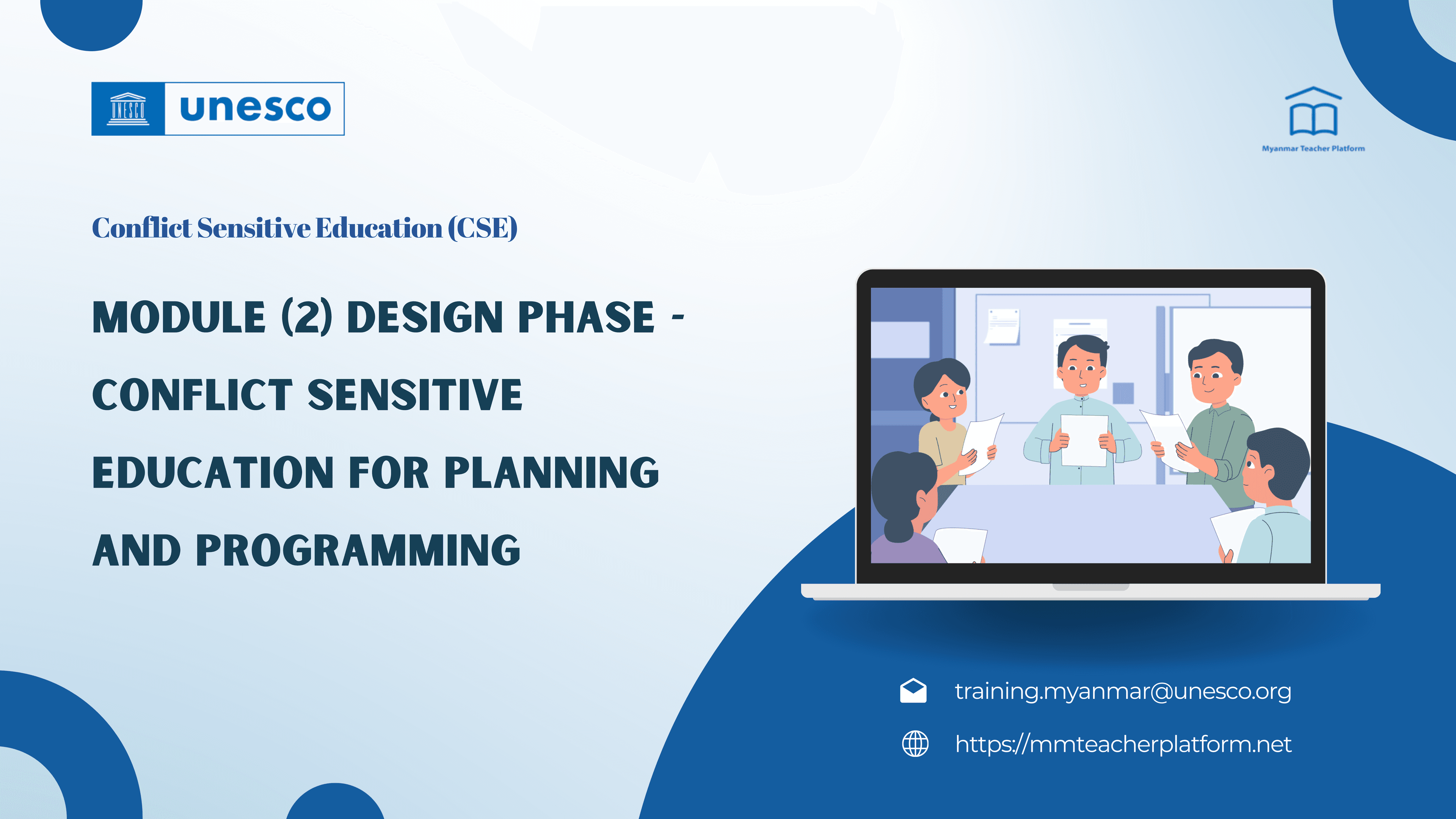Module (2) Design Phase - Conflict Sensitive Education for Planning and Programming
0
(0 Reviews)
Certified
15 hour(s)
7 Enrollment(s)
555 View(s)

Share On :
Course Description
This module focuses on the second phase of planning and programming, i.e. the design phase. This module walks participants through the different activities and actions to be undertaken during the design phase, which includes objective setting, stakeholder engagement, selection of appropriate interventions, adapting flexible and responsive delivery mechanism. The module also covers the key ethical considerations that must be observed during the design phase.
Module Target Audience
This module has been designed for organisation leaders, programme or project leaders active in the education sector within Myanmar, regardless of the nature of the learning initiatives they are organising, which could be
- Formal, informal, non-formal schools and educational opportunities
- Private, public and community schools
- Schools in urban as well as semi-rural and rural areas.
Course Objectives
This module is designed for organisation leaders, programme or project managers in the education sector who play a crucial role in planning, designing, and delivering education programmes across Myanmar, which includes the broad sector of learning opportunities ranging from the formal to the non-formal, from the public to the private and from the nationally accredited to informal learning opportunities. This module is the second of five modules, all focusing on integrating conflict sensitive education (CSE) principles and strategies in planning and programming.
Learning Outcomes
After the completion of this module, participants will be able to:
- Define the conflict sensitive design approach;
- Define conflict sensitivity in planning and programming;
- Describe the importance of designing programmes in a conflict sensitive manner;
- Describe the six guiding principles of CSE;
- Outline the main activities of the design phase;
- Link the needs assessment and conflict analysis findings to design decisions;
- Set clear and smart programme objectives;
- Establish positive and conflict transformative outcomes;
- Mobilise and engage stakeholders;
- Select appropriate interventions based on CSE principles;
- Implement adaptive and responsive delivery mechanisms;
- Develop risk management and contingency plans; and
- Illustrate the primary ethical considerations to be observed during the design phase.
Please login to take this course
Lectures
Introduction
Lesson 1: Conflict Sensitive Design: Definition, Importance, Principles
Conflict Sensitivity
Designing educational initiatives in a conflict sensitive manner 2
Conflict Sensitive Education (CSE) guiding principles
Video Lesson (1)
Lesson 1: Check your understanding: Quiz 1
Lesson 1: Check your understanding: Quiz 2
Lesson 2: Key Conflict Sensitive Design Activities
Reviewing Needs Assessment and Conflict Analysis Findings
Setting the programme’s transformative outcomes & SMART objectives
How to set conflict sensitive objectives
Engaging stakeholders
Selecting appropriate interventions
Selecting appropriate interventions - Continued
Video Lesson (2)
Lesson 2: Check your understanding: Quiz 1
Lesson 2: Checking your understanding - Quiz 2
Lesson 2: Checking your understanding - Quiz 3
Lesson 3: Adapting Flexible and Responsive Delivery Mechanisms
Developing Risk Management and Contingency Plans
How to develop a contingency plan
Conducting a Conflict Sensitivity Check
Video Lesson (3)
Lesson 3: Check your understanding: Quiz 1
Lesson 3: Check your understanding - Quiz 2
Lesson 4: Conflict Sensitive Design Ethical Considerations
How to mainstream ethical conduct across the organisation
How to mainstream ethical conduct across the organisation - Continued
Video Lesson (4)
Lesson 4: Check your understanding - Quiz 1
Lesson 4: Check your understanding - Quiz 2
Summary
Summary
Summary: Video
Related Courses
